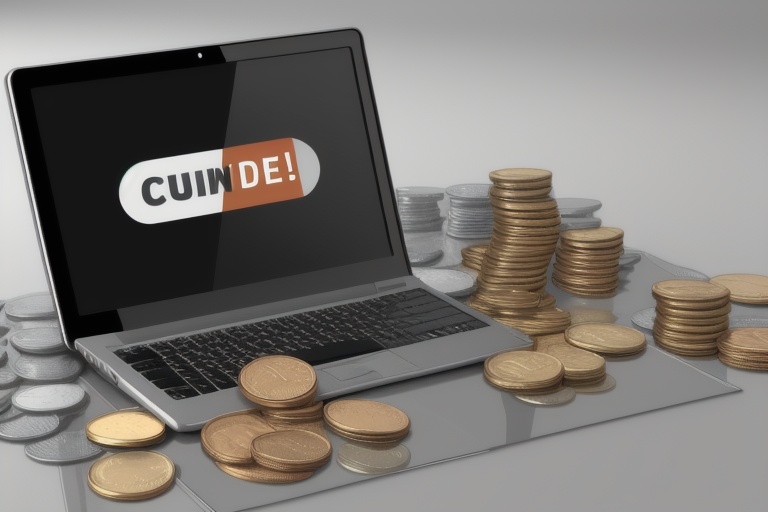Coin collecting offers a myriad of fascinating journeys into history, craftsmanship, and numismatics, and it provides enthusiasts with the joy of discovery and the potential for financial reward. A standout area of interest for many collectors is the world of error coins – unique pieces that veer from the expected due to mishaps in the minting process. These numismatic anomalies capture the imagination, often becoming sought-after prizes within a collector's trove.
Coin collecting offers a myriad of fascinating journeys into history, craftsmanship, and numismatics, and it provides enthusiasts with the joy of discovery and the potential for financial reward. A standout area of interest for many collectors is the world of error coins – unique pieces that veer from the expected due to mishaps in the minting process. These numismatic anomalies capture the imagination, often becoming sought-after prizes within a collector's trove.
Understanding Error Coins
Error coins are minting mistakes that have escaped the stringent quality control processes of mints and entered circulation. To appreciate the value and uniqueness of error coins, it's essential to identify the different types that are commonly encountered:
Inscription Errors
Inaccuracies in a coin's inscriptions, such as missing or doubled letters, can arise from die deterioration or overstrikes. These errors might be partial – affecting only a portion of a word or number – and can significantly enhance the coin's collectibility.
Date and Mint Mark Errors
The date and mint mark on a coin are critical identifiers, and when these are stamped incorrectly – think over-punches or double strikes – it can lead to an increase in the coin's value. These errors are less common but highly sought after.
Primary Element Errors
Discrepancies in the central design or primary element (such as a president's bust or state emblem) are particularly notable. Such errors can range from subtle doubling to more dramatic mis-strikes or absences, garnering significant collector interest.
Material Errors
Occasionally, coins are produced with incorrect metal alloys or even foreign materials. Knowing the standard compositions of various coinages allows collectors to discern and capitalize on these errors.
Die Rotation Errors
A coin should have its reverse at a 180-degree rotation in relation to the obverse. Any deviation from this standard – such as the images on either side not being aligned correctly – could point to a valuable die rotation error.
Edge Errors
The coin's edge also harbors potential for error – unusual lines, missing reeded edges, and incorrect lettering are all aspects to inspect. Roll the coin across your palm to survey the entire circumference for any discrepancies.
Tools for Error Coin Hunting
Arm yourself with the necessary tools for identifying these hidden treasures in your collection:
- A magnifying glass, jeweler's loupe, or digital microscope to see intricate details.
- Good lighting, such as a desk lamp, to illuminate the coins.
- A soft cloth for handling coins without causing scratches.
- A compartmentalized case, to keep different denominations organized and secure.
Evaluating Your Collection
Begin with sorting coins by denomination which allows for a more focused approach to identifying errors. It's important to meticulously examine each detail for irregularities and to understand that while some error coins may be detectable with the naked eye, others require a more scrutinizing inspection.
Expert Insights and Value Assessment
The value of error coins is determined by their rarity, the significance of the error, and collector demand. Consult currency catalogs, online forums, professional appraisers, and other expert outlets for information on valuation. Tools like the "Red Book: A Guide Book of United States Coins" provide detailed pricing guidelines and are revered by collectors.
Educational Resources
There are many educational resources available for collectors who wish to delve deeper into error coins. Ken Potter's "Strike It Rich With Pocket Change: Error Coins Bring Big Money," for example, is an exemplary title that offers high-resolution error examples, denominational guides, and advice for spotting these anomalies.
Joining the Collector Community
Coin collecting is not just about individual pursuits; it's a community activity. Online forums and local collector clubs offer platforms for enthusiasts to share their passion, exchange knowledge, and sometimes, their coins. Whether you're an expert or a novice eager to learn, engaging with the community can be immensely valuable.
Novelty Coins and Collectible Value
Occasionally, collectors encounter pieces like novelty coins, which stand apart from typical currency. These items, often part of themed collections like a series celebrating marine life with unique designs like dolphins, can have a special place among collector niches. While not conventionally valuable, their uniqueness attracts a dedicated following.
The Allure of Coin Collecting
Coin collecting is a hobby that continues to delight and surprise. Each discovery, from the polished to the imperfect, contributes to the rich tapestry of numismatics. Whether it's a valuable error coin, a historical treasure, or a sentimental piece, each addition tells a story and brings its unique flavor to your collection. So keep your magnifying lens handy, your eyes sharp, and embark on the unending adventure of coin collecting. Happy hunting!
Information for this article was gathered from the following source.


